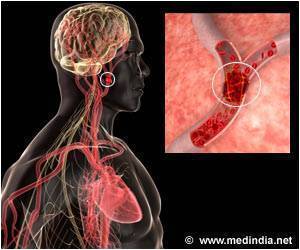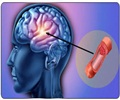Unhealthy lifestyle practices combined with existing diseases can lead to an increased risk of stroke.

Projected Global Trends in Ischemic Stroke Incidence, Deaths and Disability-Adjusted Life Years From 2020 to 2030
Go to source). Ischemic stroke is caused by a blockage of blood flow to the brain and is the most common type of stroke.
‘Seven major risk factors namely smoking, a diet high in sodium, high blood pressure, high cholesterol, kidney dysfunction, high blood sugar, and high BMI are linked to increased number of strokes.’





“This increase in the global death toll of ischemic stroke along with a predicted further increase in the future is concerning, but ischemic stroke is highly preventable,” said study author Lize Xiong, MD, of Tongji University in Shanghai, China. For the study, researchers analyzed data from the Global Health Data Exchange from 1990-2019. As the world population grew, the global number of ischemic stroke deaths increased from 2.04 million in 1990 to 3.29 million in 2019. However, the stroke rate decreased from 66 strokes per 100,000 people in 1990 to 44 strokes per 100,000 people in 2019.
How to Reduce the Risk of Stroke Deaths to Nearly 5 Million
“This decrease in the stroke rate likely means that the overall increase in the number of strokes worldwide is mainly due to population growth and aging,” Xiong said.Researchers then used the database to predict the number of deaths for 2020-2030.
When researchers factored in the risk factors, they predicted that the overall number of deaths from stroke could reach 6.4 million if these risk factors are not controlled or prevented.
“This study provides an insightful perspective on the global burden of ischemic stroke,” said editorial author Carlos Cantú-Brito, MD, PhD, from the Stroke Clinic of the Salvador Zubirán National Institute of Health Sciences and Nutrition in Mexico City, Mexico. “It points out many vital factors that should be used for informed policymaking, emphasizing the need for policies and programs to promote healthy lifestyle choices, including regular physical activity, low-salt diets, and smoking cessation.”
Advertisement
The study was supported by the Chinese Ministry of Science and Technology, Shanghai Fourth People's Hospital, Chinese National Key Research and Development Program, and Nature Science Foundation of Shanghai.
Advertisement
- Projected Global Trends in Ischemic Stroke Incidence, Deaths and Disability-Adjusted Life Years From 2020 to 2030 - (https://www.ahajournals.org/doi/10.1161/STROKEAHA.122.040073)















